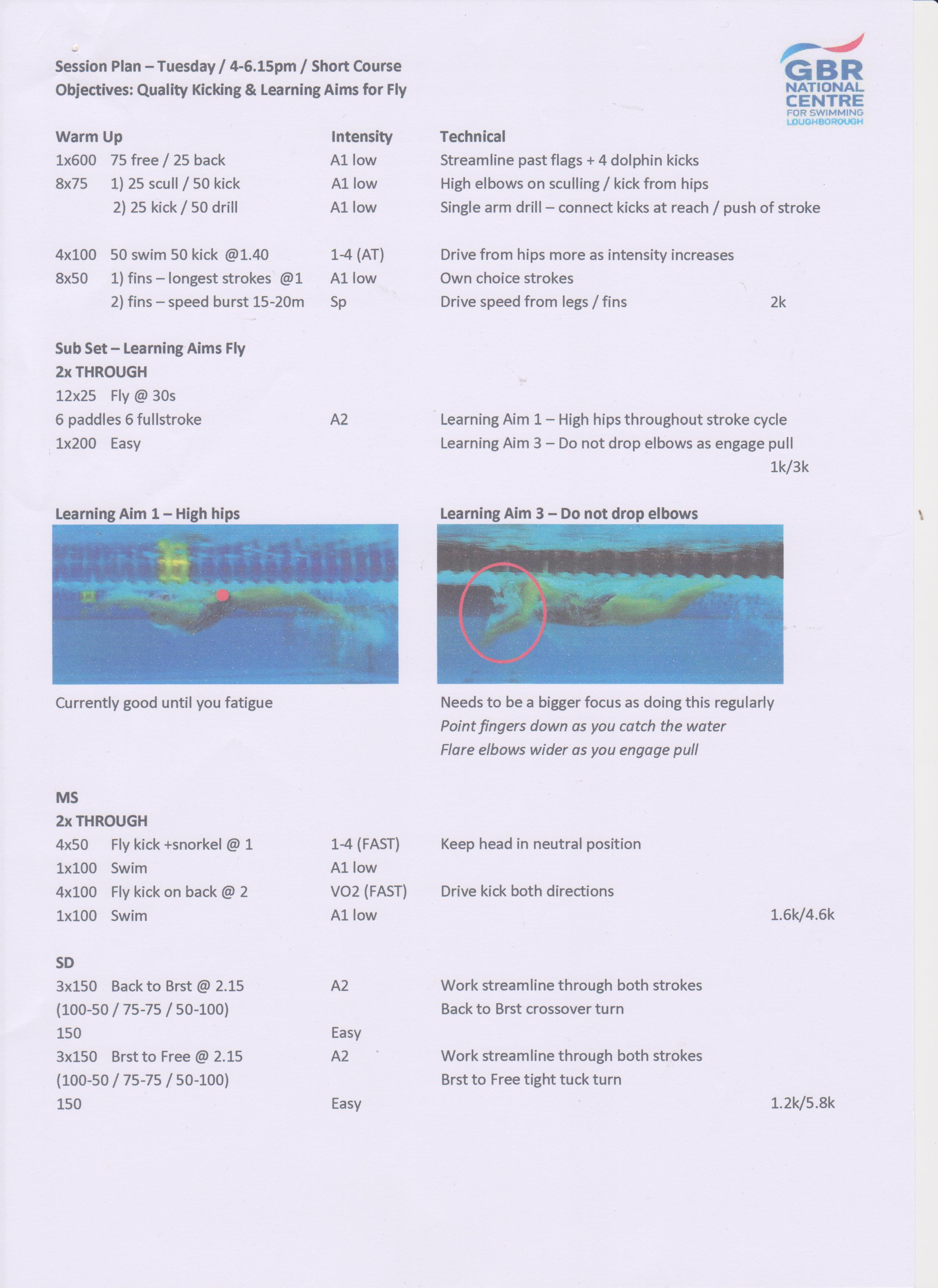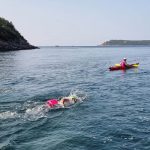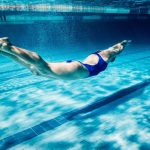Add purpose to your swim training sessions
What do you think about when you swim? Perhaps it’s those things you could be doing instead or whether you’ve got time for another loop of the lake or a few more lengths of the pool. Maybe you sing songs (in your head, obviously) or chant mantras or worry about how much longer you can keep up with the person in front.
If you want to become a more efficient swimmer, and therefore faster, actively thinking about your swimming may be a better approach than trying to distract yourself or letting your thoughts wander. You can do even better by planning what you’re going to think about and focusing on specific learning objectives in your swimming.
At least, this was one of the key lessons that emerged from the ASA Masters Conference at the ASA HQ in Loughborough last week.
David Hemmings is coach to several of Britain’s top swimmers including Jack Burnell, who recently secured a place in the marathon swim at next year’s Olympics. In his presentation he shared a training session for one of his athletes (see below for details). Like many swimmers I immediately focused on what the swimmer needed to do: how many lengths off what time and on what stroke. But that wasn’t the most interesting part.
As well as the distance, stroke and intensity information, there was an additional column for “technical”. Every single set in the session had a corresponding technical point that was specific to the individual, in this case a talented 200m butterfly swimmer.
For example, the first part of the warm up was a 600m swim to be done as 75m front crawl and 25m backstroke, six times through at a low aerobic pace. The technical instruction was to streamline past the flags using four dolphin kicks after each turn. The second part of the warm was a mixture of sculling, drills and kicking with the technical points to focus on high elbows during sculling, kicking from the hips and co-ordinating the kick with the arm stroke on the drills.
In other words, there was something specific to think about for every single length.
During a competition, David had counted his swimmer’s strokes per length and noted that speed dropped and number of strokes increased towards the latter end of the race – something fairly common in swimming. Rather than just dismissing this as inevitable fatigue, David wanted to understand why this was happening, which required a careful analysis of the stroke at different parts of the race. He observed that as the swimmer fatigued, her hips sunk and she had a tendency to drop her elbows at the mid-point of the stroke.
Armed with this knowledge, he added specific technical points (supported by video stills) into the training session to remind his swimmer to concentrate on keeping her hips near the surface and elbows high.
The technical points extended to every part of the training session including the cool down at the end, where he wanted his swimmer focused on streamlining through all points of the stroke and working on tucking tight on breaststroke to front crawl turns.
As adult swimmers, even if we swim with a club, it’s unlikely we will get the same degree of personal attention from a coach as an elite swimmer but that doesn’t mean we can’t incorporate a technical component into every length we swim. Most likely you will have to determine for yourself what these technical points will be, and they should clearly be related to a part of your swimming you want to work on. This does require a little bit of forward planning and possibly the involvement of a coach to highlight your specific learning needs.
Here are some suggestions for technical points you could incorporate into your next training swim. It doesn’t matter if you swim with a group or if someone else has set the training session. No one knows what goes on in your head as you swim so you can choose what to focus on and improve.
- Focus on holding a streamlined position off the wall after each turn.
- Keep head low when turning to breathe.
- Point hand and fingers down to initiate catch bending the arm at the elbow (rather than pulling through with a straight arm).
- Drive your kick from your hips, not your knees.
- Hold your core tight throughout the stroke for better streamlining and connection between your arms and feet.
The list could go on, and you should make your own. For most of us it’s impossible to focus on more than one or two points at a time so if you have six points you want to work on for example you could select two for your warm up, two for your main set and two for your cool down.
As a bonus, you may find having something specific to focus on makes your swimming more enjoyable and possibly easier as well.
For more training articles see: http://h2openmagazine.com/training/









